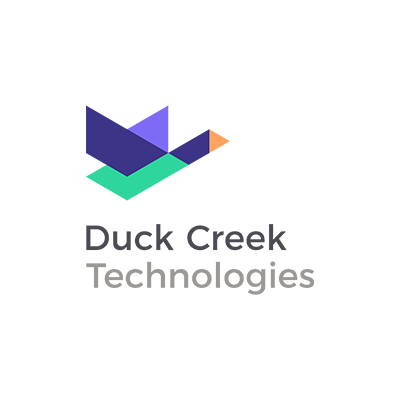While some P&C insurers are launching innovative products, entering new markets, and winning customers at an incredible pace, others are locked in a battle with outdated systems and slowing growth.
The difference is not talent or ambition, or even resources, but a gap in agility.
This blog explores why some insurers have the ability to adapt and innovate quickly, and what separates them from the rest of the pack.
The P&C Industry’s Shifting Ground
Change has always been a constant in the P&C industry, from shifting regulations to evolving risks. What’s different today is the sheer speed and interconnectedness of these threats
The industry is moving faster than ever, and a carrier’s ability to keep pace is no longer a luxury—it is a requirement for survival. The most successful insurers are not just reacting to these shifts; they are built to anticipate and adapt to them.
Evolving Customer Expectations
Customers now expect personalized, seamless digital experiences, instant services, and flexible products.
Imagine Gen Z, our digital natives, on your website, re-entering information when everywhere else it auto populates. Or Gen X trying to submit a claim by uploading photos only to receive a phone call two days later from an agent asking for the exact same information, again. Or a Baby Boomer who just wants to talk with a live agent, but instead is funneled into a complex, multi-layered automated phone tree with no clear option to speak to a person.
These are not minor annoyances; they are a failure of the customer’s journey – and they drive customers to abandon the process, and their policy, without a second thought.
Market Volatility
Imagine a new type of widespread cyberattack targeting insurance carriers. A modern, agile carrier can quickly analyze the risk, develop a new rider for its commercial policies, and distribute it within weeks.
A legacy carrier is stuck, with a product launch cycle measured in months and an underwriting system that cannot handle new risk factors. As a result, it misses the market entirely and loses a valuable segment to its more agile competitors.
Consider an unexpected surge in inflation that makes existing rates unsustainable. While an agile carrier can adjust its pricing and reserves in real-time, a legacy carrier is held back by slow, manual processes, leading to significant financial losses.
This inability to respond to market shifts in real-time is a competitive a sure way to lose to the competition.
Technology Revolution
Modern carriers are leveraging artificial intelligence, real-time data, and cloud platforms to be more agile, efficient, and profitable. For them, the cloud is not just a place to store data; it is a platform for rapid product innovation, allowing them to configure a new policy type or adjust pricing in days, not months. This technology-driven efficiency translates directly into a healthier bottom line and the ability to offer more competitive pricing.
The legacy insurance system carrier, on the other hand, is left behind. Its hard-coded, on-prem systems are a liability—slow, expensive to maintain, and unable to integrate with modern tools. This leaves them unable to compete on speed, cost, or innovation, a trajectory that will eventually lead to irrelevance.
The difference is while one carrier enables the agility required to respond and thrive, the other carrier continues down the path to Insignificance.
Signs of a Stalled P&C Carrier
The signs of a stalled carrier are not always obvious to the outside world, but on the inside, they can be suffocating. Imagine a company trying to launch a new, innovative insurance product. The idea is great but bringing it to the market is a nightmare.
It starts with a series of meetings to get approval, followed by months of manual work to re-code product rules and pricing into a brittle, hard-coded legacy insurance system. The underwriting team uses spreadsheets to track new applicants because the core system cannot handle the new risk factors. Meanwhile, the claims department must manually enter data from the new policies into a separate system – creating a process fraught with delays and errors.
This is not a failure of ambition, but a failure of process—a slow decline by a thousand paper cuts where every step is a disjointed, manual task that drains resources, frustrates employees, and prevents the company from capitalizing on a great idea.
This lack of agility leads to:
- Slow Product Launches: It takes months or even years to launch a new product or make a simple rate change.
- Legacy Roadblocks: Systems are brittle, complex, and prevent integration with modern technologies.
- Manual & Inefficient Processes: Relying on manual underwriting, claims processing, and policy administration leads to errors and higher costs.
- Reactive vs. Proactive Responses: The carrier is always playing catch-up, reacting to market changes rather than anticipating and leading them.
P&C Insurance Modernization: How Agile P&C Carriers Win
While some carriers are held back by the weight of their past, others are using a new P&C carrier strategy to not just survive, but to thrive. These are the agile carriers—companies that have built their operations around a foundation of speed, flexibility, and intelligence.
They are not held captive by legacy systems; instead, they have embraced a strategic shift that allows them to innovate at the pace of change.
So, what are the key characteristics of a modern, agile insurance carrier?
- Flexible Technology: They use modern, flexible platforms that can be easily configured and updated, allowing for rapid innovation.
- Data-Driven Decisions: They leverage real-time data to create hyper-personalized policies and predict customer needs.
- Seamless Integration: They have a unified ecosystem where all systems communicate, enabling a truly connected customer experience.
- Proactive Strategy: They quickly pivot to new opportunities, launch new products, and respond to competitive threats with speed.
P&C Agility is a Choice
The divide between struggling and thriving insurers is not a matter of luck. It is a choice to embrace a new P&C carrier strategy and insurance digital transformation.






